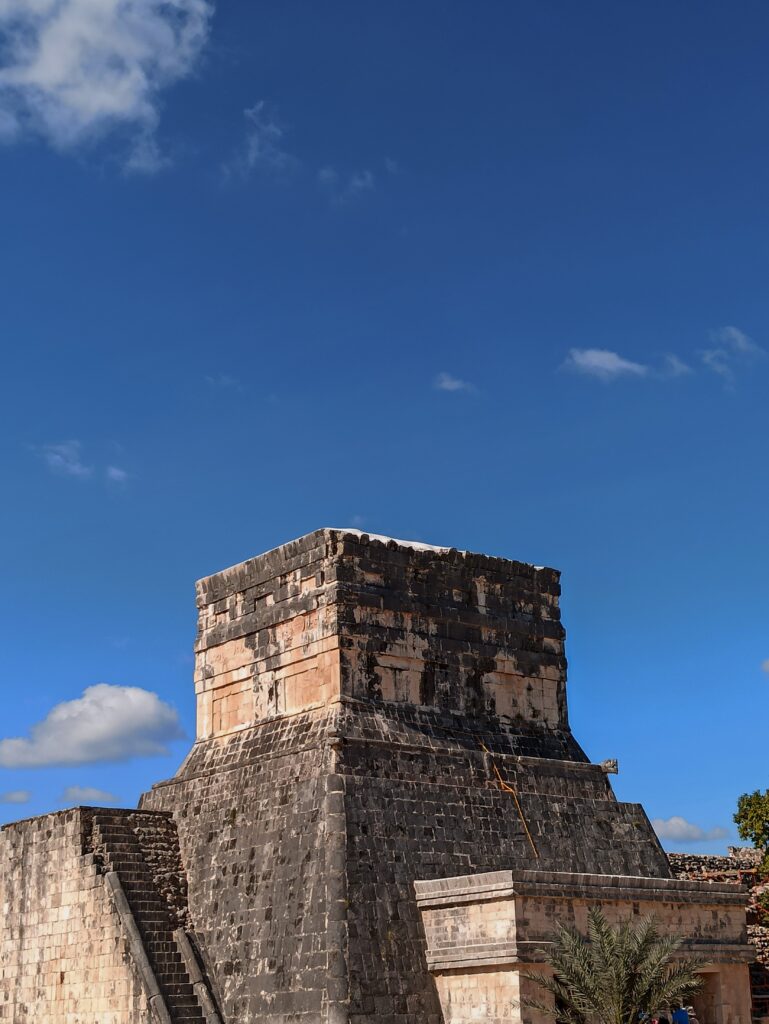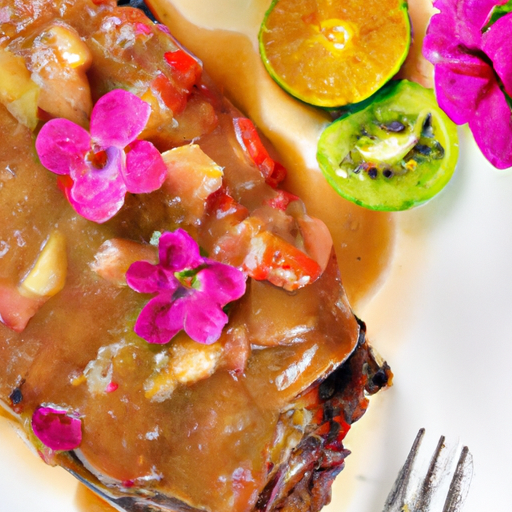In this article, we will take you on a delightful journey through the exquisite Yucatan cuisine. You will discover the rich and vibrant flavors that make this culinary tradition so unique. From savory dishes like Yucatan chicken to mouthwatering desserts, we will explore the diverse range of dishes that are a part of Yucatan’s culinary heritage. Get ready to tantalize your taste buds and learn about the fascinating history and cultural influences that shape the Yucatan cuisine.
Exploring the Exquisite Yucatan Cuisine: A Journey Through Flavors
Introduction to Yucatan Cuisine
When it comes to culinary delights, Yucatan cuisine stands out as a treasure trove of flavors and gastronomic experiences. Located in southeastern Mexico, the Yucatan Peninsula is famous for its rich cultural heritage and delicious traditional dishes. From tantalizing street food to mouthwatering sweet treats, Yucatan cuisine offers a culinary adventure that will leave you craving for more.
Historical Influences on Yucatan Cuisine
Yucatan cuisine is a delightful fusion of indigenous Mayan flavors, Spanish influences from the colonial era, and hints of Caribbean and Middle Eastern influence. The Mayan civilization played a crucial role in shaping the culinary traditions of the region. Staples such as corn, beans, and squash were staples in the Mayan diet and remain an integral part of Yucatan cuisine today.
During the Spanish colonial era, the Yucatan Peninsula became a melting pot of cultures. Spanish colonizers introduced ingredients such as pork, chicken, and citrus fruits, which are now key components of many traditional Yucatan dishes. The influence of Caribbean and Middle Eastern cuisines can be seen in the use of spices, chili peppers, and unique cooking techniques.

Traditional Ingredients in Yucatan Cuisine
Yucatan cuisine is known for its vibrant flavors and the use of fresh and local ingredients. Traditional dishes often feature ingredients such as achiote (annatto seeds), habanero chili peppers, sour oranges, and cilantro. Achiote paste, made from ground annatto seeds, gives many Yucatan dishes their characteristic red color and earthy flavor.
Sour oranges, also known as Seville oranges, are a staple in Yucatan cooking. The tangy juice of these oranges adds a refreshing citrusy taste to marinades, sauces, and dressings. Habanero chili peppers, known for their intense heat, are used in moderation to add a spicy kick to many Yucatan dishes. Cilantro, with its fresh and vibrant flavor, is used as a garnish or in marinades to enhance the overall taste of the dish.
Popular Yucatan Dishes
Let’s embark on a culinary journey through some of the most popular Yucatan dishes. One iconic dish is “Cochinita Pibil,” a traditional slow-roasted pork dish. The tender and juicy pork is marinated in a flavorful blend of achiote paste, sour orange juice, garlic, and spices, then wrapped in banana leaves and cooked until it falls apart. This dish is often served with freshly made corn tortillas and pickled red onions.
Another must-try dish is “Poc Chuc,” a marinated grilled pork dish. Thinly sliced pork is marinated in a tangy mixture of sour orange juice and spices, then grilled to perfection. Poc Chuc is typically served with black beans, pickled onions, and homemade salsa.
For seafood lovers, “Panuchos” and “Salbutes” are delectable options. Panuchos are crispy tortillas topped with black beans, shredded chicken or turkey, pickled onions, avocado, and tomato sauce. Salbutes, on the other hand, are fluffy tortillas topped with shredded chicken or turkey, pickled onions, avocado, and a tangy tomato salsa. Both dishes are bursting with flavors and textures.

Yucatan Street Food Delights
One of the best ways to experience the vibrant food culture of Yucatan is by exploring the local street food scene. Yucatan street food offers a wide variety of delicious treats that will satisfy any craving.
One beloved street food dish is “Marquesitas,” a sweet dessert similar to a crepe. These thin, crispy treats are filled with creamy Edam cheese and rolled up. They are often enjoyed with a spread of Nutella or condensed milk, adding an extra touch of sweetness to the already delightful treat.
If you’re in the mood for something savory, “Salbutes” and “Panuchos” are commonly found on the streets of Yucatan. These handheld delights are quick and easy to eat, making them perfect for a quick snack on the go. Top them with your choice of meat, salsa, and toppings for a burst of flavors.
Yucatan Sweet Treats
No culinary adventure through Yucatan would be complete without sampling the region’s delightful sweet treats. “Brazo de Reina” is a popular dessert that translates to “Queen’s Arm.” This sweet roll is filled with dulce de leche or creamy custard and dusted with powdered sugar. It’s a heavenly treat that will satisfy any sweet tooth.
Another indulgent dessert is “Marquesote,” a dense and moist pound cake flavored with orange zest and cinnamon. This cake is often enjoyed with a hot cup of coffee or a glass of milk, perfect for a cozy afternoon treat.

Fusion of Cultures in Yucatan Cuisine
Yucatan cuisine reflects the rich history and cultural diversity of the region. The fusion of Mayan, Spanish, Caribbean, and Middle Eastern influences has created a unique culinary identity that sets Yucatan cuisine apart from other Mexican regional cuisines.
The interplay of flavors, spices, and cooking techniques from different cultures has resulted in a harmonious blend of sweet, savory, and spicy flavors. Whether you’re indulging in mouthwatering cochinita pibil or savoring the heat of a habanero-infused salsa, each bite tells a story of cultural exchange and culinary mastery.
Celebrating Yucatan Food Festivals
Throughout the year, Yucatan celebrates its vibrant food culture with various food festivals. One noteworthy festival is the “Festival de la Vida y Muerte” (Festival of Life and Death) held in the city of Merida. This festival pays homage to the Day of the Dead and showcases traditional Yucatan cuisine through cooking demonstrations, food stalls, and cultural events.
Another exciting event is the “Festival de la Chicharra” (Cochineal Festival) in the town of Izamal. This festival celebrates the cochineal insect, which was traditionally used as a natural red dye in Yucatan cuisine. Visitors can sample dishes made with cochineal, learn about its cultural significance, and enjoy live music and traditional dance performances.

Exploring Yucatan Wine and Beverages
To complement the delectable flavors of Yucatan cuisine, exploring the region’s local wines and beverages is a must. Yucatan is known for its refreshing fruit-based drinks, such as “Agua de Jamaica” (hibiscus tea), “Agua de Chaya” (Chaya water), and “Agua de Xtabentun” (an anise liqueur made from fermented honey and anise).
For wine enthusiasts, Yucatan offers a surprising range of locally produced wines. The region’s warm climate and fertile soil provide ideal conditions for grape cultivation. The white wines produced in Yucatan are particularly noteworthy, with crisp acidity and tropical fruit flavors that pair perfectly with the region’s cuisine.
Conclusion on Yucatan Cuisine
Exploring the exquisite flavors of Yucatan cuisine is truly a journey through a rich culinary heritage. From the indigenous Mayan influence to the Spanish colonial era and the diverse cultural exchange, Yucatan cuisine stands as a testament to the vibrant and ever-evolving culinary traditions of the region.
Whether you’re indulging in traditional dishes like cochinita pibil and poc chuc or savoring the vibrant street food delights, Yucatan cuisine is sure to delight your taste buds and leave you with unforgettable culinary memories. So, embark on this gastronomic adventure and let the flavors of Yucatan transport you to a world of culinary bliss.




